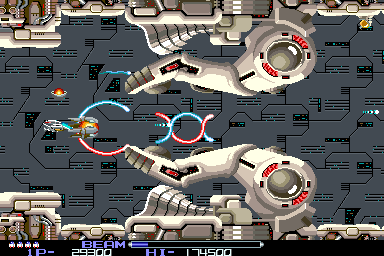shmup studio focus no. 4: treasure
Friday, September 30, 2005
Treasure was started by a group of ex-Konami staffers, and when compared to many other companies with a similar output, it is surprising to realise just how a small their staff continue to be. This fact greatly informs the types of project that they have continued to undertake – emphasis is almost always placed on giving a highly tuned and concentrated gaming experience as opposed to the huge multi level sprawling works that many other large companies offered.
In their earlier years, many of their games grew to be highly collectible – often because many of these titles received very limited pressings. Challenging platform titles such as Alien Soldier, Guardian Heroes and Gunstar Heroes soon marked out this small startup as a team to watch.
But this team’s coding skills really became apparent in seeing how they handled the shmup genre - their greatest two titles being Radiant Silvergun for SEGA’s Saturn – which has become more famous in recent years for it’s stratospheric collector’s price tag it effortlessly gets and its follow up Ikaruga (pictured above) again for another SEGA console – the Dreamcast – which was soon ported to the GameCube.
Both games have brought very gameplay innovations to the current generation of shmups in much the same way that R-Type re-invigorated the genre in the 1980’s. Now, instead of the player being given a challenge of going for an all out high score; the method in which that score was obtained is made a key component of gameplay strategy. Both games popularised the concept of chaining and as a result getting huge score multipliers in the process.
Ironic as it may sound, this group of ex-Konami staffers were very recently handed development duties on Konami’s most well known classic shmup series Gradius V – and it is generally accepted that they have done an incredible job in updating this series into the 128bit era.
Looking forward to the new handhelds, Treasure's boss Masato Maegawa has made no secret of his preference of the DS over the PSP due to Nintendo’s machine being that much more friendly for the smaller development teams they continue to have - stratospheric budgets and huge teams aren't necessarily required. Looking at Ikaruga - and subsequent titles, you may get the impression that Treasure had scores and scores of graphic artists, sound designers and coders at their disposal, yet Maegawa-san quietly notes that a total of only twenty developers work at the company to this day!












